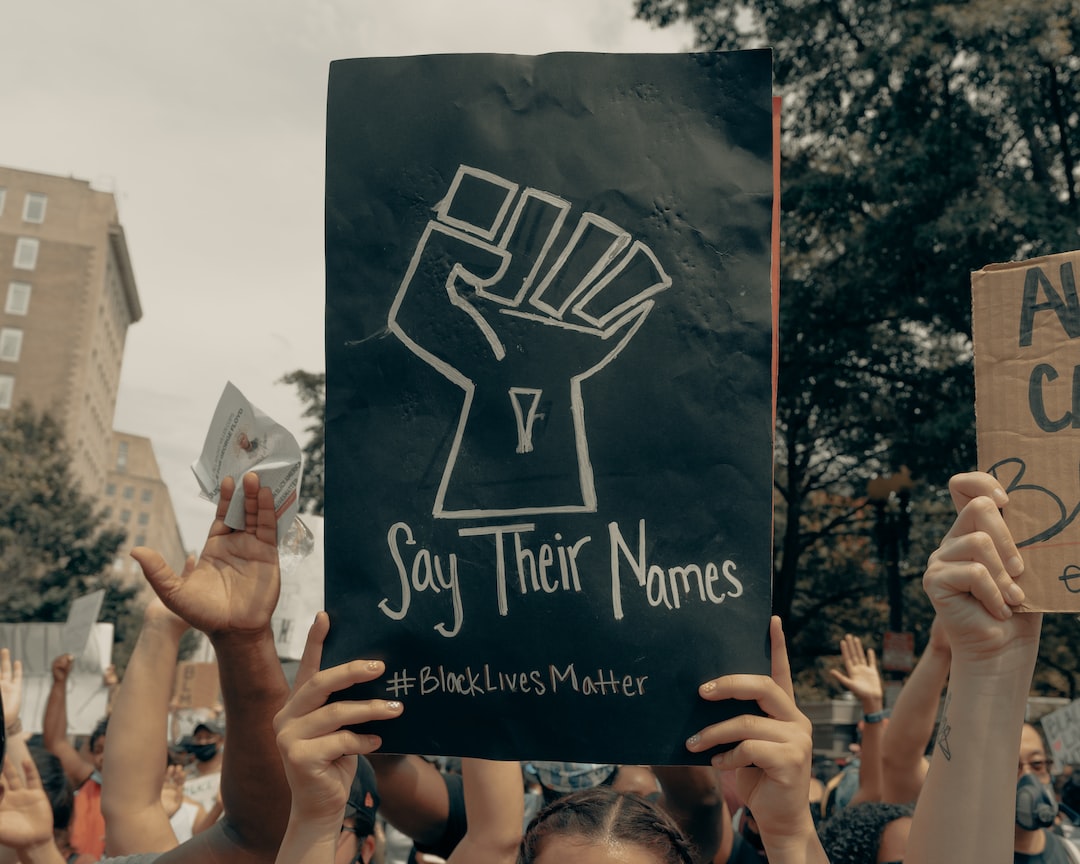Let’s set the scene, fam. 🌟 We’re gonna dive deep into one of the most powerful and transformative social movements in history—Feminism. But hold up, we’re not just scratching the surface here. We’ll be traveling back in time, waaaaay back, to when women literally had ZERO rights, and tracing the evolution of the movement all the way to our super-connected, TikTok-fueled present day. Strap in, because this is not just some dusty old history lesson; it’s YOUR history, and understanding it is key to the future we wanna build. 💪✨
The Suffrage Movement: How It All Began
Alright, let’s rewind to the early 19th century. Where were women at? Well, the short answer: not in a good place. Back then, society was basically a man’s world, and women were expected to stay in their lane—mostly at home, without a voice (literally!). Women couldn’t own property, couldn’t vote, didn’t have rights to their own wages, and were generally considered less-than in pretty much every legal sense.
But that’s when some seriously brave and woke ladies started to say, “Nah, this ain’t it.”
Kicking things off in the early 1800s, a few early feminists began to challenge the status quo. Enter the Suffrage Movement. These OG feminists were all about fighting for the right to vote. Why was this such a big deal? Because grabbing the right to vote meant power. It meant influence. It meant that women could start to have a say in how society was run.
Seneca Falls Convention: The Spark of Revolution
The year is 1848, and some absolute legends—like Elizabeth Cady Stanton and Lucretia Mott—decided to host the first-ever women’s rights convention in Seneca Falls, New York. This wasn’t just a small, casual meeting; it was a full-blown, “Yo, we’re gonna change the freaking world” kind of vibe. At this convention, they dropped the “Declaration of Sentiments,” demanding equal rights for women in nearly every area of life—social, economic, political, and religious. Oh, and yeah, they didn’t just stop at asking, they were like, “We DEMAND this, okay?”
The Seneca Falls Convention was a wake-up call. It highlighted the messed-up legal, and social barriers women faced and set the stage for what turned into a global movement. These women didn’t just start a fire—they ignited a revolution.
Marching Forward: The Long Road to Voting Rights
Fast forward a bit, and head to the early 1900s. The fight for women’s suffrage was gaining massive momentum. Women were out in the streets, marching, protesting, and making noise (and we stan that energy, honestly). Let’s also give a massive shoutout to women across the pond, like the British Suffragettes, who legit went to war for the same cause. Spoiler alert: they weren’t just holding signs and chanting; they were chaining themselves to railings and going to jail for the cause.
In the U.S., things really started heating up when the 19th Amendment was proposed. This was a game-changer, as the amendment aimed to give women the right to vote—FINALLY. After decades of struggle, the 19th Amendment was passed in 1920. It wasn’t just a win; it was a cultural reset. Women had finally become full citizens in the eyes of the law. But let’s be clear, that didn’t mean everything was sunshine and rainbows afterward. There was still so much more to do.
A Global Movement: Suffrage Beyond the U.S.
The suffragist movement wasn’t confined to the U.S. either. Global queens were fighting for rights, too. And in some countries, women got the right to vote even earlier. For instance, New Zealand was the first self-governing country where women won the right to vote in 1893. Y’all, they were ahead of their time!
This led to a domino effect across the world. Slowly, but surely, other countries began to follow suit. Japan, India, Argentina—the list goes on. But one thing’s clear: Women across the globe were waking up, speaking out, and refusing to be sidelined any longer. The global feminism movement had officially taken root, and it wasn’t going anywhere.
The Second Wave: Beyond the Ballot Box
So the 1920s roll around, and women have the right to vote. Amazing, right? But hold up, because there’s more to this journey. The whole “we got to vote now” wasn’t solving every issue. There were still deep, systemic inequalities in work, education, and family life. Cue the mid-20th century, where things started bubbling again. We’re talking about the 1960s and 1970s here, people. A time when everything was up for debate, and the world was rethinking a lot—including what it really meant to be a woman.
Enter Betty Friedan and “The Feminine Mystique”
Let’s drop some knowledge for a sec. One pivotal moment during this era was the publication of The Feminine Mystique by Betty Friedan in 1963. This book was basically a bombshell that exposed the unhappiness of women in traditional housewife roles. You might be grabbing your oat milk latte and saying, “Yeah, duh,” but during that time, it was revolutionary to talk about women’s dissatisfaction publicly.
Friedan wasn’t just pointing fingers; she was starting a new conversation, one that said, “Being a stay-at-home wife isn’t necessarily fulfilling for every woman, and that’s okay.” This catapulted forward an entirely new wave of feminism—a wave that looked beyond voting rights and started examining the expectations, roles, and stereotypes imposed on women. We’re talking economic independence, reproductive rights, and actually having a career that doesn’t end with marriage.
Feminism Gets Fired Up: The Role of Radical Feminists
The Second Wave wasn’t all cocktails and conversation, though. It had some serious fire 🔥 to it. Enter radical feminists. They were all about dismantling the whole system of patriarchy. These women wanted more than just small changes—they wanted to kill the entire system that oppressed women. BOOM, right? They talked about patriarchy as a full-blown system of domination, where men essentially had control over women in multiple arenas, from politics to private life.
And get this, radical feminists weren’t just about talk. They organized everything from protests to consciousness-raising groups where women could share their experiences and strategize ways to fight back. Some even criticized the mainstream Second Wave as being too cozy with male-dominated power structures. Essentially, radical feminists weren’t here to play nice—they wanted nothing less than a complete overhaul of society’s rules.
Intersectionality: The Birth of a Broader Scope
As the Second Wave continued, a crucial realization emerged: the feminist movement was at risk of catering mostly to straight, white, middle-class women. And guess what? That wasn’t anywhere near the full picture. Women of color, LGBTQ+ and working-class women had different experiences and faced unique layers of oppression.
Enter the concept of intersectionality, coined by scholar Kimberlé Crenshaw in 1989. Intersectionality helped the feminist movement evolve from its narrow focus and start addressing the struggles of all women. This was a major turning point. It’s like realizing you’re solving just one piece of the puzzle when you actually belong to a bigger, messier, and more intricate picture. Intersectionality expanded the movement’s scope to include race, sexual orientation, and economic status, paving the way for a more inclusive feminism.
Third Wave Feminism: Diversifying the Movement
By the time the 1990s rolled around, feminism had already been through some serious phases. But, like all movements, it still had room to grow. Meet the Third Wave of feminism. The vibe here was all about diversity and breaking down the idea that there’s “one way” to be a feminist. Spoiler alert: there isn’t. And that’s the whole point.
The Third Wave was born out of frustration with the Second Wave’s often rigid norms. It questioned, “Why should feminism look a certain way?” Third-wave feminists wanted to redefine what it meant to be a woman and a feminist. The landscape of feminist debate also expanded, growing to include discussions around gender identity, sexuality, and cultural representation—issues that had gotten less spotlight in earlier waves.
Riot Grrrls and the Punk Rock Influence
Let’s talk culture, where Third Wave FEMINISM really shined. Enter the Riot Grrrls movement—a punk rock-infused, underground feminist rebellion that took the ‘90s by storm. This movement was all about all-girl bands, DIY zines, and taking control of female representation in the most hardcore way possible.
The whole premise of Riot Grrrl was empowerment and inclusiveness, which meant making feminism relatable and accessible—to the point where even those out on the fringes felt seen. It showed that feminism didn’t have to be this grand, academic thing. It could also be angry, loud, and unapologetically bold. And this wasn’t just limited to punk rock; similar movements were spurring on in urban spaces, classrooms, and the streets. Riot Grrrls were DIY culture at its finest, and they helped spread feminist principles to an entirely new, younger, and media-savvy crowd.
Reclaiming Sexuality and Identity
Another hallmark of Third Wave feminism was the push to reclaim female sexuality and identity in ways that challenged both patriarchy and earlier feminist thought. Gone were the days when feminists would denounce lipstick, high heels, or overt expressions of sexuality as inherently oppressive. Third Wave feminists were like, “Why can’t I be a CEO by day and twerk at the club by night?” It was all about choice—whether to dress conservatively or provocatively, to get married or stay single, to be child-free or become a mom— all of these were valid.
This aspect of the Third Wave was both celebrated and critiqued, but it undeniably broadened what feminism could look like. It wasn’t just about toppling institutional barriers; it was also about living your truth and smashing expectations on a personal level. Your feminism could be political, and it could also be about buying that lipstick or hitting the gym. The point was empowerment, however that looked for you.
Fourth Wave Feminism: A Social Media Revolution
So now we’ve made it to the current era—the Fourth Wave. The game has entirely changed, y’all. We’re in a digital world now, where information spreads in seconds and social change can happen at the speed of a swipe. And while all the previous waves laid the foundation, the Fourth Wave is where things get amplified—online. This wave calls out injustice in real-time and holds people accountable like never before.
#MeToo and the Power of Virality
One of the biggest catalysts for the Fourth Wave is the rise of social justice movements like #MeToo. Originally started by activist Tarana Burke in 2006, #MeToo exploded globally in 2017 after women began sharing their experiences with sexual harassment and assault using the hashtag on social media. Suddenly, taboo topics were out in the open, and everyone from celebrities to everyday folks was part of the conversation. For many, #MeToo became their first step in understanding the widespread impact of patriarchy and toxic masculinity.
Through Twitter, Facebook, and Instagram, women no longer needed traditional media to tell their stories. They had direct access to their audiences and could mobilize social pressure on abusers, predators, and institutions covering up for them. It was raw, it was real, and it was powerful. The sheer scope and speed of #MeToo, reaching countries around the world in mere days, proved the internet had fundamentally altered the feminist landscape.
Fight Against Misogyny in Digital Spaces
Nothing comes without ups and downs. With the rise of the internet, misogyny and online harassment have also seen an extreme uptick. Digital spaces can sometimes feel like a war zone for women and marginalized folks, with trolls, incels, and worse lurking behind the anonymity of the keyboard. But the thing that’s different now is the massive community of support behind anyone who speaks out. Fourth Wave feminists have turned social media into both a megaphone for justice and a sanctuary for solidarity.
From TikTok explainers to Instagram stories, the tactics used to fight back against online misogyny are diverse and energetic. Women, non-binary folks, and allies are calling out microaggressions, debunking myths, and challenging gross behavior in real-time. What used to be dismissed or silenced is now broadcasted for everyone to judge. The digital age has handed feminists a new toolbox, and they’re using it in ways previous generations couldn’t have imagined.
Body Positivity and the Redefinition of Beauty
Beyond taking on serious social justice causes, the Fourth Wave has also embraced body positivity and a redefinition of beauty standards. Yeah, we’re talking about the “love yourself exactly as you are” vibe that is all over your IG feed. Gone are the days of oppressive beauty standards where only one body type was celebrated. Fourth Wave feminists are reclaiming their bodies on their own terms—stretch marks, belly rolls, and all.
The Fourth Wave encourages us to celebrate diversity in beauty, whether that’s size, skin color, or natural features like freckles and textured hair. Plus, it’s challenging the sexist frameworks that have, for decades, put women’s value on how they look. And here’s the kicker—it’s also scrutinizing how these standards hurt men and non-binary folks, too. Body positivity isn’t just a feminist issue; it’s a human one.
Rising Conversations on Gender Fluidity and Non-binary Identities
One of the most groundbreaking aspects of Fourth Wave feminism is its inclusive approach to gender. Because let’s be real for a sec—gender isn’t just male or female. Fourth Wave feminism has embraced the fight for transgender, non-binary, gender-fluid, and other gender-nonconforming folks. This wave recognizes that the patriarchy messes with everyone and calls into question the binary system that has long ruled.
Topics like gender identity, pronouns, bathroom access, and healthcare for transgender people are now major issues within the feminist movement. And these aren’t just side conversations—they’re front and center. Feminism in the Fourth Wave refuses to leave anyone out. The old “one size fits all” feminism has been put to rest, and now, it’s all about intersectional approaches where every identity matters.
Environmental Feminism: The Intersection of Feminism and Eco-Activism
Oh, and let’s not forget, fourth wavers aren’t just about smashing the patriarchy—they’re also deeply concerned with saving the planet. Women are often disproportionately affected by environmental issues, especially in marginalized communities. Fourth Wave feminism recognizes that climate change, deforestation, and pollution have direct impacts on women’s lives. Which is why environmental feminism, or ‘eco-feminism,’ has seen a massive rise.
Eco-feminism links the exploitation of nature with the exploitation of women and other oppressed groups. It’s about demanding sustainable and ethical practices that respect both people and the planet. In this way, the Fourth Wave ties feminism directly into activism for climate justice, creating a holistic approach to dismantling systems of power that hurt both people and the Earth.
The Future of Feminism: What’s Next?
So, here we are, immersed in the Fourth Wave, with feminism constantly evolving right in front of us. But where do we go from here? Spoiler alert: We’re just getting started.
Global Feminism: Intersectional and Inclusive
Feminism’s future is global. It’s already happening, but in the future, we’re likely to see even more intersectional approaches that include voices from every corner of the world. Feminists in the Global South and minority groups in Western countries will, hopefully, take the lead in shaping a more inclusive and representative movement. It’s about moving beyond Western-centric narratives and acknowledging how issues like colonialism, racism, and economic injustice intersect with gender inequality.
Moreover, there’s a growing recognition that the feminist movement must be multicultural and multilingual, capable of addressing unique challenges posed by different cultures and countries. The future of feminism could involve a deeper collaboration with global grassroots organizations, creating a more united front that fights for women’s rights regardless of geography.
The “Next Wave”: Tech and AI in Feminism
Another prospective chapter could focus on leveraging technology and artificial intelligence in furthering the feminist movement. We’re already seeing the impacts — from AI bias to data privacy concerns, which disproportionately affect women and marginalized communities. Future feminists will likely shape policies and develop technologies that uplift rather than oppress. And let’s not sleep on the incredible power of virtual communities, especially as they continue to evolve with advancements in metaverse tech and more.
This “Next Wave” of feminism could also mean harnessing big data to track gender inequalities on a massive scale and using AI to sort and solve these issues. Imagine gender equality metrics available at the touch of a button, AI-driven campaigns that target systemic sexism, and virtual platforms that make feminism accessible globally like never before. This isn’t hypothetical; it’s a potential reality where tech and feminism intersect to drive unprecedented social change.
Mental Health Awareness: A Core Feminist Issue
Mental health is increasingly becoming a public conversation, and for good reason. Women, LGBTQ+ folks, and other marginalized communities often experience higher levels of mental health issues due to systemic oppression. Feminism’s future could very well lay in placing mental health at the core of its agenda. Mental health isn’t just a “side issue” anymore; it’s threaded into the broader conversation of equity and justice.
Expect to see future feminist movements advocating for accessible mental health services and challenging the stigmas surrounding mental illness, particularly for those who face additional stressors due to their gender and identities. The fight for gender equity in mental healthcare could further dismantle the systems that leave so many people struggling in silence.
Men in Feminism: Allies and Advocates
Looking ahead, the role of men in feminism will continue to be a hot topic. While “feminist” still tends to be a label more associated with women, there’s an increasing vibe-check happening around men’s involvement in the movement. More men are embracing feminism, recognizing that dismantling toxic masculinity benefits everyone. The future could see more initiatives focused on how men can be allies, challenging patriarchal norms from within their own circles.
And it’s not just about being allies; it’s about active participation in feminist activism. Expect to see discussions around male privilege, how men can use it for good, and broader movements involving masculinity studies as an integral part of feminist discourse.
Lit FAQs About Feminism 🔥
Alright, now that we’ve journeyed through the Feminist revolution, from past to present, let’s address some burning questions that people might still have. 💥
Is Feminism Still Relevant Today?
Absolutely, 100% YES! Feminism continues to be relevant because gender inequality isn’t some ancient relic we’ve fully defeated. Whether it’s the gender pay gap, reproductive rights, or online harassment, feminists are still out here fighting battles. Plus, feminism today is more inclusive and intersectional than ever, making it applicable to a wide range of social justice issues.
Do Men Benefit from Feminism?
Yes, sir! Feminism isn’t just for women. When we dismantle patriarchal norms, everyone benefits. Instead of limiting men to toxic masculinity, feminism promotes healthier expressions of manhood and equal partnership in relationships. Plus, fighting for gender parity in the workplace and home helps create a more fair and balanced society for all.
What Does Intersectional Feminism Really Mean?
Intersectional feminism considers how different systems of oppression—like racism, sexism, and classism—intersect and impact people differently. For example, a Black woman might face racism in addition to sexism, which will affect her experiences and challenges in unique ways. With intersectional feminism, no one is left out because feminism that isn’t inclusive isn’t real feminism.
Can You Be Feminist and Embrace Traditional Gender Roles?
Totally. Feminism is about choice. If choosing traditional gender roles (e.g., being a stay-at-home mom) is what makes you feel empowered, then you do you. Feminism doesn’t judge; it fights for everyone’s right to make their own choices, free of pressure and stereotypes.
What’s the Difference Between Egalitarianism and Feminism?
The key difference between the two is focus. While egalitarianism advocates for equality of all people across all societal layers, feminism puts a specific focus on achieving gender equality. Feminism is a branch of egalitarianism that zooms in on the systemic inequalities affecting women and marginalized gender identities.
Why Do Some Women Say, “I’m Not a Feminist, But…”?
This phrase usually pops up when people misunderstand what feminism really stands for. Some might feel feminism is too political, too angry, or not inclusive enough, shaped by stereotypes rather than facts. But, if you believe in gender equality, guess what? You’re already leaning towards feminist values. The goal is to keep the movement transparent, accessible, and inclusive so everyone can proudly identify as a feminist.
Sources and References 📚
- **Levine-Clark, M. (2005). **Beyond Equal Rights: Gender in Modern British and American History. History Compass, 3(1).
- Friedan, B. (1963). The Feminine Mystique. W.W. Norton.
- Crenshaw, K. (1989). Demarginalizing the Intersection of Race and Sex: A Black Feminist Critique of Anti-Discrimination Doctrine, Feminist Theory and Antiracist Politics. University of Chicago Legal Forum.
- Eisenstein, H. (2009). Feminism Seduced: How Global Elites Use Women’s Labor and Ideas to Exploit the World. Paradigm.
- Zimmerman, T. (1992). The Riot Grrrls Movement. Feminist Cultural Studies.
- Burke, T. (2006). #MeToo Movement. African American Policy Forum.
- Gonsalves, P. (2018). Ecofeminism: Intersections of Gender and Environment. Global Environmental Research Quarterly.
Boom. That’s the full breakdown. Keep fighting the good fight, stay woke, and never stop learning. Your role in this ever-evolving feminist landscape is vital, and every voice matters.✊✨




